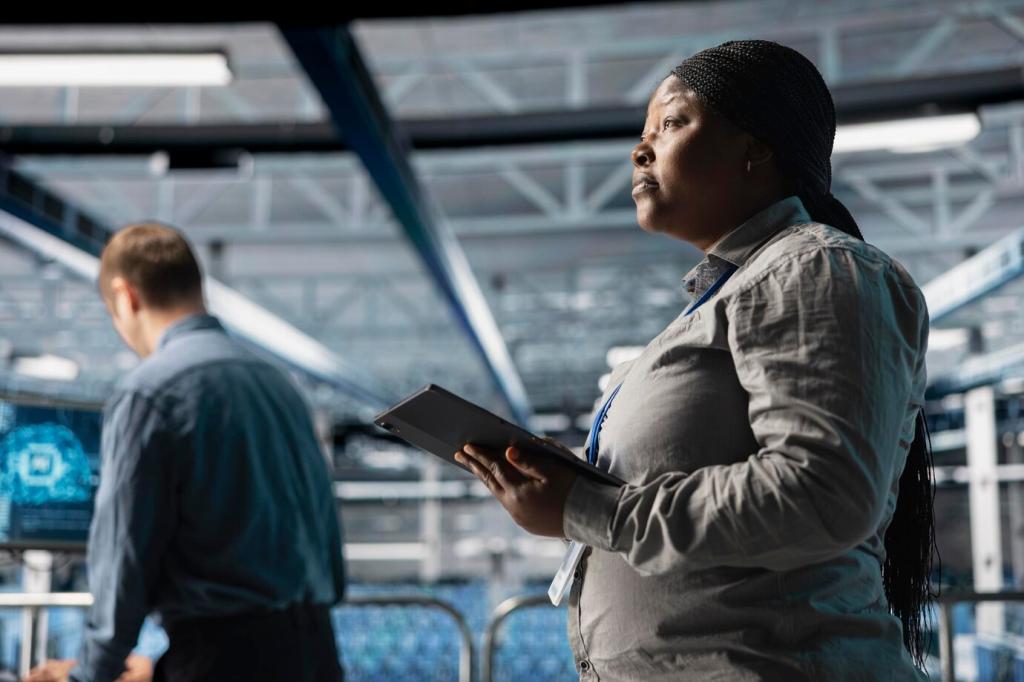
Build Better: Workforce Training and Development for Construction Projects
Chosen theme: Workforce Training and Development for Construction Projects. From the first safety talk to leadership pipelines, this home page explores practical ways to grow crews, reduce rework, and deliver projects with pride. Join the conversation—share your training wins, questions, and ideas so others can learn from your site’s experience.

Designing a Training Program That Works
Walk the site, talk to supervisors, and compare required tasks to current capabilities. Identify must-have skills for each phase—formwork, MEP rough-in, finishes—and prioritize high-risk gaps. Invite your crews to validate the list; they’ll surface blind spots you might miss.

Toolbox Talks That People Remember
Keep it site-specific and short. Tell a real story: a near miss with a backing truck, a saved hand thanks to lockout. Invite two-way conversation and ask, “What would you do differently today?” Ownership beats lectures every time.
PPE, Hazards, and Hands-On Drills
Make hazard recognition tactile. Stage a quick drill where crews identify three hazards before starting. Reinforce PPE choices with why-based explanations, not just rules. When people understand the risk, compliance becomes common sense rather than a checkbox.
Emergency Readiness and Realistic Simulations
Practice evacuation routes, rescue calls, and first-aid roles under mild time pressure. Simulations reveal small gaps—blocked gates, missing radios—that matter in real events. Capture lessons and update your plan immediately, then invite feedback from every trade partner.


Digital Fluency: BIM, Tablets, and Layout
Train crews to navigate models, verify dimensions, and read current sheets on tablets. A ten-minute sync on cloud file versions prevents hours of rework. Show how model views tie to physical benchmarks so digital checks become second nature.
Equipment Mastery and Preventive Care
Operator training should cover controls, load charts, spotter communication, and daily inspections. Teach how small maintenance habits—greasing, filter checks, tire pressure—prevent breakdowns that domino into schedule slips. Share your best tip for keeping machines mission-ready.
Sustainable Builds and Energy-Smart Practices
Introduce low-waste practices, material handling plans, and air-sealing techniques that hit performance targets. When installers know the why behind details, they protect specs that matter. Sustainability training often pays back through fewer callbacks and happier owners.
Developing Leaders in the Field
Shift from shouting instructions to asking clarifying questions. Good coaches set clear expectations, remove obstacles, and praise specifics. A five-minute end-of-day huddle can align tomorrow’s work and surface risks while building trust across trades.
Developing Leaders in the Field
Train to use closed-loop communication for lifts and deliveries. Standardize hand signals and radio protocols. Practice short, unambiguous instructions that survive distance, wind, and equipment noise. Better talk equals fewer mistakes and less finger-pointing later.


Onboarding That Accelerates Impact

Provide a simple plan: safety orientation, buddy assignment, first tasks, and checkpoints at days 7, 30, and 90. Clear goals prevent drift and give new hires confidence. Invite questions early and often to avoid silent confusion.
Measuring Impact and ROI
Choose indicators like near-miss reporting, inspection pass rates, first-time quality, and percent plan complete. Review weekly in short stand-ups. When teams see their numbers move, training feels meaningful, not mandatory.


Measuring Impact and ROI
Embed quick self-inspections: dimensions verified, penetrations sealed, fasteners torqued. Use photos for proof and learning. After one team adopted a three-point check, punch-list items dropped notably, freeing time for the next critical activities.
Inclusive, Resilient Teams
Offer visual guides, translated materials, and peer translators for critical briefings. Use demonstrations over dense text whenever possible. When everyone truly understands, work speeds up and errors go down—accessibility is a practical advantage.


Inclusive, Resilient Teams
Partner with community programs, veterans’ groups, and trade schools. Provide fair access to certifications and leadership tracks. Diverse crews bring fresh problem-solving approaches that improve quality and client relationships alike.
Join our mailing list
